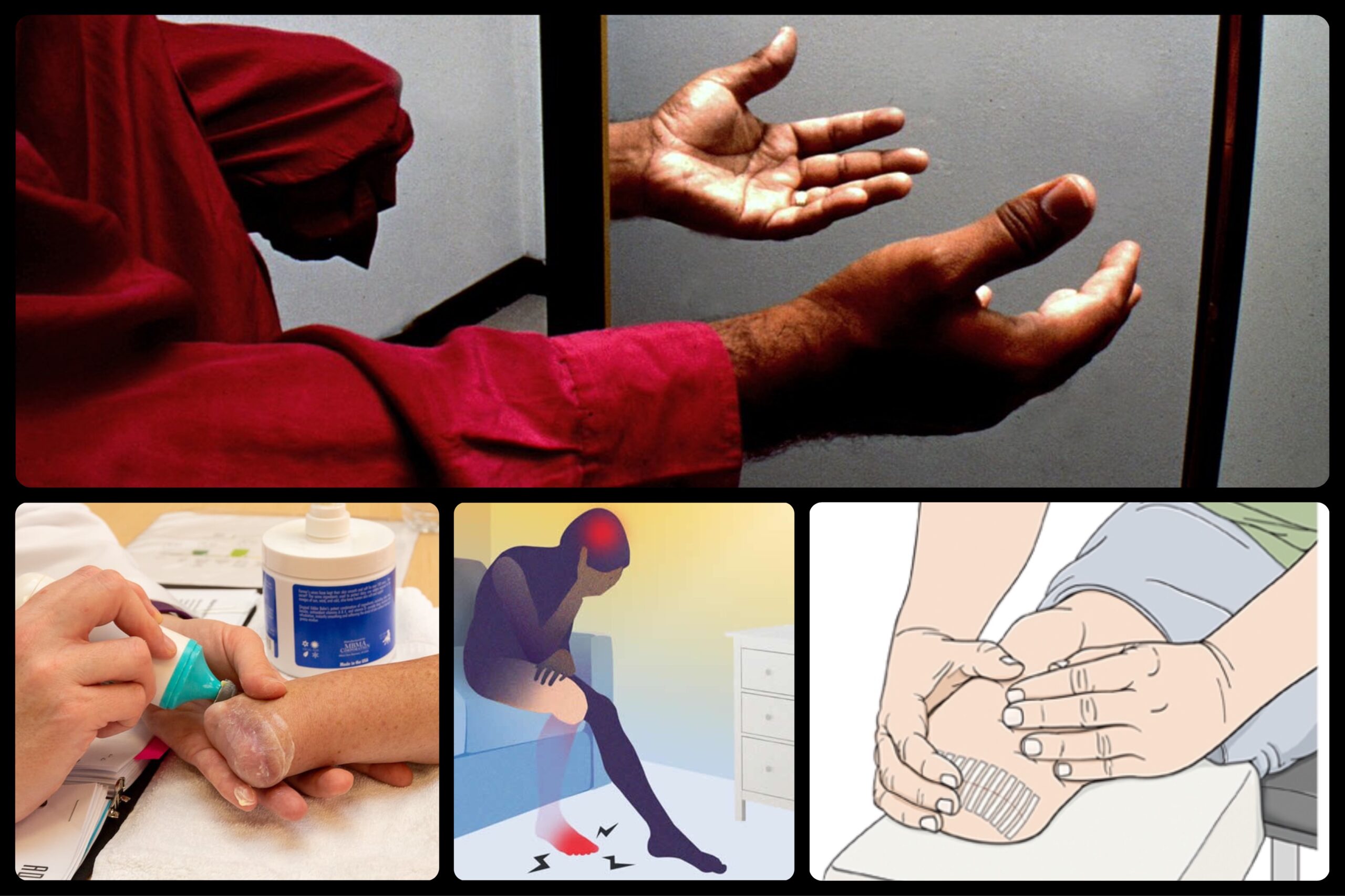If you’ve experienced amputation (limb loss), it’s possible to encounter phantom pain, a genuine sensation of pain that seems to originate in the absent body part. Over time, this condition may diminish. Some individuals might also contend with residual limb pain in the remaining portion of the limb. Phantom pain can be alleviated through the use of pain relievers and a therapeutic approach known as mirror therapy.
Phantom Limb Pain; What is it ?
Following an amputation, individuals may encounter pain in the portion of the limb that is no longer present, a sensation known as phantom limb pain. This pain is authentic, and the term “phantom” refers to its location, which is the missing limb or a specific part of the limb (such as fingers or toes). The intensity and duration of phantom limb pain can vary, ranging from mild and brief episodes to severe and lasting for days or even longer. It may manifest after a surgical amputation, a medical procedure that removes a portion of a limb, or in cases of accidental amputation, such as the loss of a finger, toe, or another body part. Fortunately, phantom pain can be effectively managed.
Approximately 8 out of every 10 individuals who undergo limb loss encounter varying degrees of phantom pain.
Phantom pain manifests as a sensation of discomfort or pain in the area where the absent body part should be. Additionally, losing part of your body can lead to other associated issues, including:
What is Phantom sensations
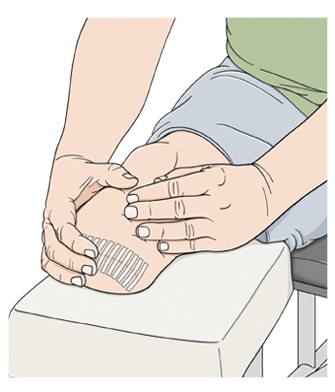
In cases of phantom sensations, the missing limb or extremity continues to feel like an integral part of the body, without the presence of pain. Those experiencing these sensations might even momentarily forget that a portion of their lower limb is missing, leading them to attempt walking on both legs.
What is Residual limb pain
Residual limb pain pertains to the pain experienced in the remaining portion of the limb, typically at the site of the amputation. This pain can frequently be attributed to medical causes, such as nerve damage or nerve entrapment (pressure on the nerve). It affects about 7 out of every 10 individuals with limb loss.
You should never feel embarrassed or hesitant to discuss your condition with your healthcare provider. Despite the absence of a limb or body part, your pain is real and recognized as a legitimate medical condition. Your concerns will be taken seriously and not dismissed. Healthcare providers are trained professionals who are dedicated to working with you to alleviate your pain and address your needs.
Symptoms of Phantom Pain
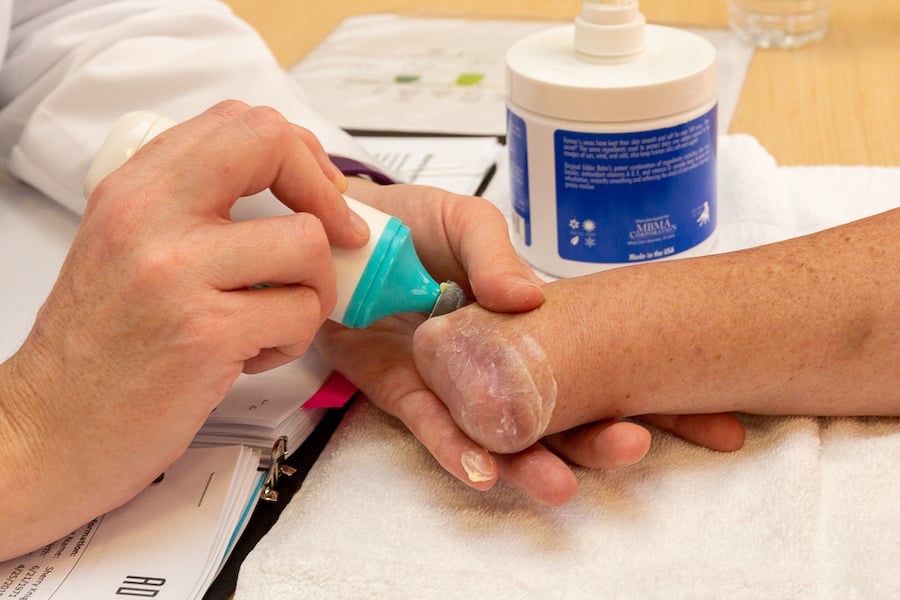
Phantom pain usually emerges shortly after limb loss, and it can persist for three to six months, the typical duration for wound healing post-amputation. In rare cases, this pain might develop months or even years later.
Experts attribute phantom pain to a neural signal mix-up, primarily between the spinal cord and the brain. Even after a body part is amputated, the nerve connections from the periphery to the brain remain intact. The brain can sometimes misinterpret or process these signals as pain sensations, even if the amputated portion has been physically removed.
Cause of Residual Limb Pain
Residual limb pain, which affects the remaining part of the limb (the stump), can be attributed to various factors, including:
- Bruising.
- Bone infection (osteomyelitis) or bone spurs.
- Nerve damage (neuropathic pain) or inflammation (neuroma).
- Poor blood flow.
- Ill-fitting prosthetic device.
- Pressure injuries (bedsores).
- Skin or wound infections.
Risk Factors of Phantom Limb Pain
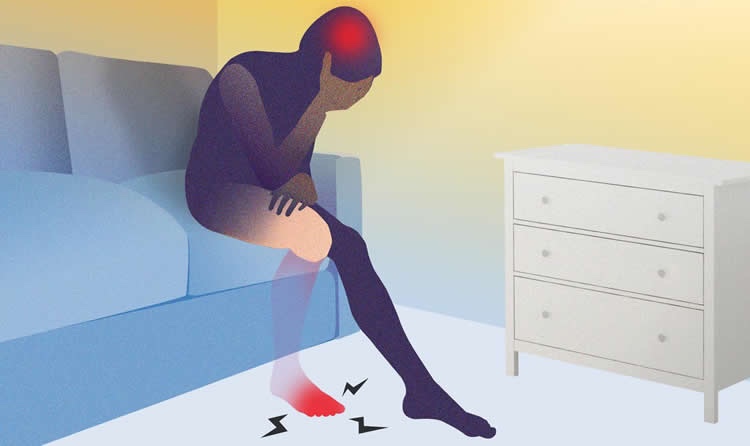
Phantom limb pain can affect anyone with an amputation, and some individuals may notice that the pain intensifies when they’re not wearing a prosthetic device. Several factors can trigger or worsen phantom limb pain, including:
- Angina (chest pain due to low oxygen to the heart).
- Changes in temperature or barometric pressure.
- Constipation.
- Shingles (herpes zoster).
- S*xual activity or physical touch.
- Smoking.
- Stress.
Symptoms of Phantom Limb Pain
Phantom pain symptoms can vary in duration, from momentary sensations to lasting for days. Typically, during the initial six months following an amputation, the intensity and frequency of pain tend to decrease. However, up to 8 in 10 individuals may still experience phantom pain even two years after amputation. Phantom pain can manifest as:
- Burning or aching sensations.
- Clamping, pinching, or vise-like pain.
- Itching or tingling feelings.
- Shooting or stabbing pains.
- Throbbing sensations.
- Twisting or cramping.
Test and Diagnosis
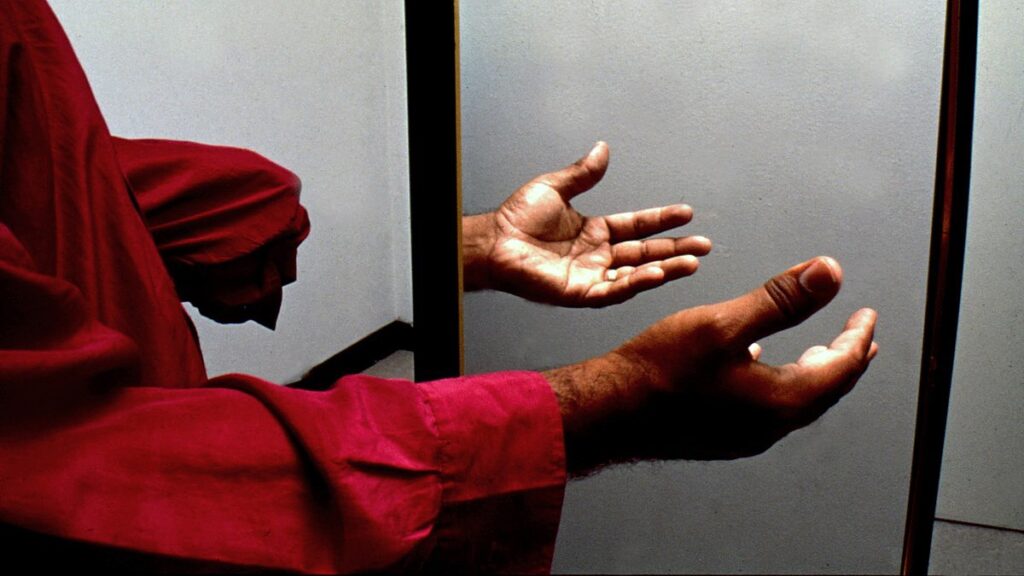
Your healthcare provider will perform a physical examination and possibly order tests to eliminate potential causes of residual limb pain, such as infections. These diagnostic tests may involve blood work and imaging scans like ultrasounds. If no underlying cause is found, your provider may diagnose phantom pain based on the symptoms you describe.
How is phantom limb pain treated?
Phantom limb pain can be managed with various approaches, such as:
- Medications: Pain relievers, anti-inflammatories, and sometimes antidepressants or anticonvulsants can be prescribed to help alleviate the pain.
- Mirror therapy: This technique involves using a mirror to create the illusion that the missing limb is still there, which can provide relief from phantom pain.
- Physical therapy: Exercises and massage can help improve blood circulation and alleviate discomfort.
- Prosthetic adjustments: Properly fitting prosthetic devices can help reduce pain associated with residual limb issues.
- Nerve blocks: Injection of a local anesthetic can temporarily block pain signals.
- Cognitive-behavioral therapy (CBT): CBT can help individuals manage their pain by changing thought patterns and behaviors.
- Acupuncture or relaxation techniques: Alternative therapies may offer relief for some individuals.
The best treatment approach varies from person to person, and it’s essential to work with a healthcare provider to find the most effective strategy for managing phantom limb pain.
Certain research studies indicate that combining spinal and general anesthesia during limb amputation surgery may reduce the likelihood of developing phantom limb pain. This approach is one of the potential methods explored to mitigate this condition. However, it’s important to discuss the options and risks with your surgical team when planning an amputation procedure.
